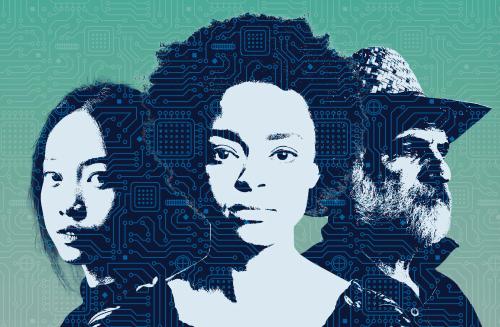Helping young people prepare to engage in work and life as productive adults is a central challenge for any society. Yet, many young people in the United States—particularly those from low-income or less educated families—find that the path to employment and economic security in adulthood is poorly marked or inaccessible.
Using an advanced methodology and longitudinal data, this report examines two main questions:
- The quality of jobs (as measured by wages, benefits, hours, and job satisfaction) held by 29-year-olds who experienced disadvantage in adolescence
- Whether particular employment, education, and training experiences in adolescence and early adulthood predict higher-quality jobs for 29-year-olds from disadvantaged backgrounds
We found that while most 29-year-olds are employed, background matters. Among those who were disadvantaged as adolescents, 79 percent are employed at age 29, and among those workers, 38 percent have high-quality jobs as measured by our job quality index. Their counterparts—29-year-olds from non-disadvantaged backgrounds—fare better: 90 percent are employed, and 48 percent of those have high-quality jobs.

Job quality among those from disadvantaged backgrounds varies by race and ethnicity: 21 percent of blacks have lower-quality jobs compared to 13 percent of whites and Hispanics. However, after controlling for education, training, work experience, and other characteristics, the gap in job quality scores between blacks and whites disappears, further emphasizing the value of equipping all young people for success in the labor market.
Turning to our second question, we identified the following factors as associated with higher quality jobs among 29-year-olds from disadvantaged backgrounds:
Post-secondary education. Consistent with other research, this analysis finds that college degrees (associate, bachelor’s and graduate) are the strongest predictor of a high-quality job among young adults who were disadvantaged as adolescents, highlighting education’s potential as an equalizing force.
Internships, apprenticeships, cooperative education, and mentoring in high school. These work-based learning (WBL) experiences incorporate positive relationships with adults as supervisors and mentors. It is notable that they affect job quality a decade later, given that the effects of training programs sometimes fade over time.
Earlier experiences in the labor market. Having a job as a teenager (ages 16 to 18) predicts higher job quality in adulthood, as do higher wages at age 23. Given that the analysis controls for education, work experience, and other characteristics, the wage finding suggests that regardless of a young person’s education or work history, early good jobs (as measured by wages) lead to later good jobs.
Based on these findings, this report showcases key investments and education and training reforms that would provide more young people with a full range of opportunities as they develop and grow, and better prepare them to tackle the problems and jobs of the future.
Expand work-based learning within high school. Well-designed work-based learning (WBL) experiences enable adults to provide students with developmentally appropriate and incremental guidance that helps them develop the skills that employers seek in new hires. Moreover, it can link students to employers and contacts they would likely never reach on their own, especially if they and their families have limited social and professional networks
Increase completion rates of post-secondary degrees, with an explicit focus on quality and equity. The road to completion must run through quality teaching and curricula, since completion goals otherwise can be gamed by diluting curricula or screening out less-prepared students.
Improve on-ramps to employment for teens and young adults, particularly for those without post-secondary credentials. These on-ramps to employment can take many forms. In addition to the work-based learning programs in high school referenced above, nonprofits and community-based groups can offer them as well, and such organizations may be especially appropriate for older youth who are past high-school age and unsure about college. Programs for these young adults not in high school or college typically offer work readiness and technical skills development, often in combination with academics, mentoring, supportive services, and paid internships or stipends. Well-designed programs align training with local employer needs and look for employment opportunities with potential for advancement.
Promote further research and action on the role of positive relationships in employment and training programs for youth and young adults. Assess the feasibility and value of embedding supportive relationships between young people and caring adults as core principles in education and workforce programs. While it is not new or controversial to say that positive relationships are critical to human development, fostering and supporting such relationships is not always reflected in program design, funding, and implementation.
Download the full report.
The Brookings Institution is committed to quality, independence, and impact.
We are supported by a diverse array of funders. In line with our values and policies, each Brookings publication represents the sole views of its author(s).












